Do turtles have blood in their shell?
Turtle lovers, herpetologists, and others possess a cabinet of curiosities concerning turtles’ shells. They wonder questions like how turtles get their shells, what their purpose is, or do they protect organs. And among them, one of the common questions is – do turtles have blood in their shell?
Indeed, turtles contain blood in their shells. Their shells are covered with scutes, featuring blood vessels and nerves. These organs and tissue have blood cells, helping scutes grow and shed (Source). However, some experts believe turtle shell does not contain blood and can’t feel any sensations (Source). But the majority agrees with the first explanation.
So, turtles’ shells carry blood but do you know what type of blood their shells accommodate? If you don’t know, let’s figure it out through this article.
Read more about turtles blog:
What Type of Blood Does A Turtle Have In Its Shell?
You know, turtles’ shells are covered with scutes, basically modified scales, and they feature blood vessels and nerves containing red blood cells. That means most turtles have red-colored blood in their shells.
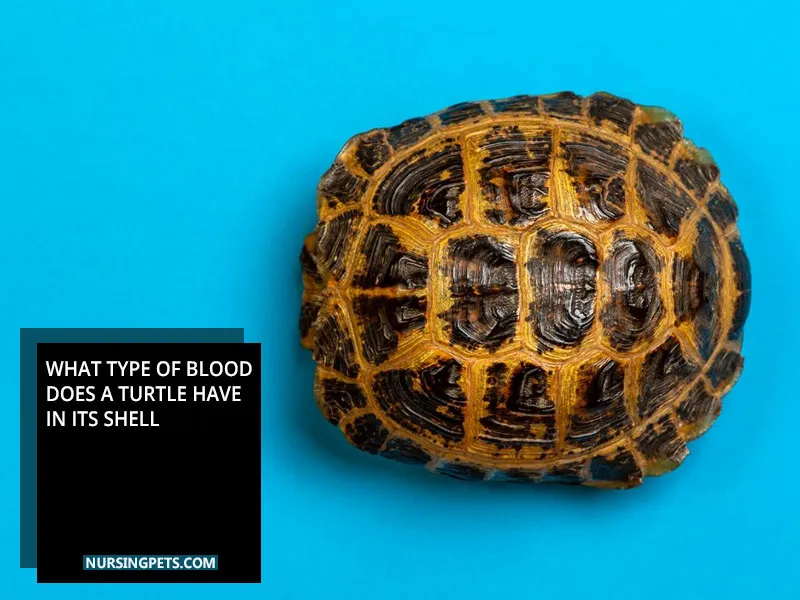
So, whenever the top shell, aka carapace, or the bottom portion, the plastron, gets damaged or cracked, you may notice red-colored blood coming out of the turtles’ shells.
However, loggerheads and green sea turtles may have white blood cells in their shells. You may witness light-colored blood dripping out whenever these turtles’ shells get cracked or damaged.
How Does Blood Circulate in a Turtle’s Body & Its Shell?
The circulatory system of turtles is quite different since they contain three-chambered hearts featuring one large ventricle and two atria.
And the ventricle accommodates oxygenated and deoxygenated blood while atria perform the blood-receiving task. These reptiles have a closed circulatory system.
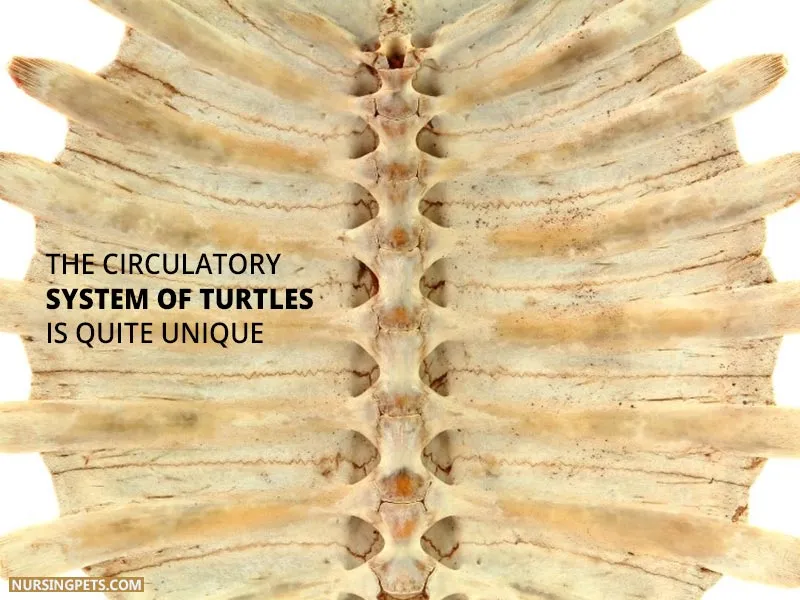
That means their blood is stored inside blood vessels, and the blood circulates unidirectionally from the heart around the systemic circulatory route. After that, it returns to the heart again.
A turtle’s heart pushes blood to all its vital organs and muscle groups. It pumps a large amount of blood underneath the carapace (turtle’s upper shell) to warm up its body before beginning blood circulation. So, this is how blood circulates in a turtle’s body and shell.
Do Turtle Shell Bleed?
Yes, a turtle shell can bleed when damaged; we have already discussed this topic. As you know, a turtle shell has scutes featuring nerves and blood vessels; when it becomes cracked, it can start bleeding red or other colored blood, depending on the turtle species.
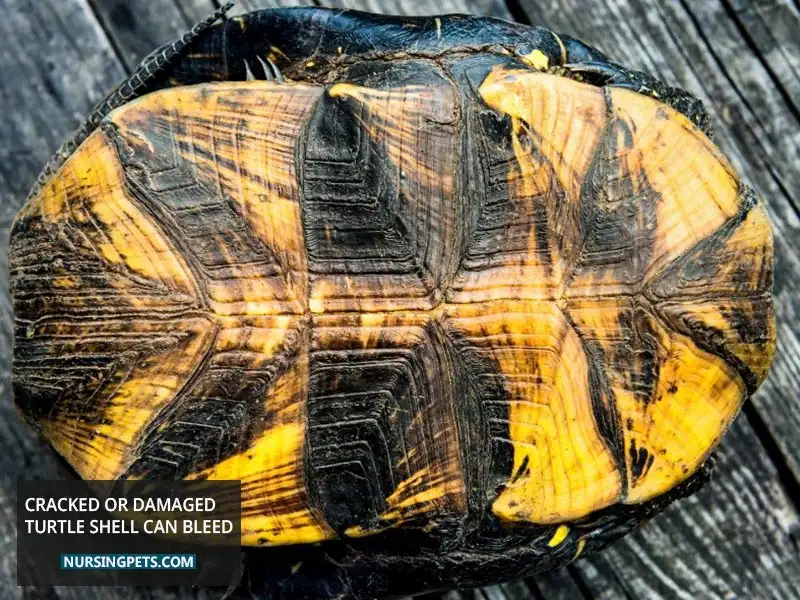
So, if you wonder, “why is my turtle shell bleeding?” you have the answer. But damages can’t be the only reason for the turtle to bleed. Shell shedding (not usual), vitamin A deficiency, bacterial or fungal infection, and burn or other injuries can also be the causes for the turtle to bleed from its shell area.
Now let’s talk about what to do if a turtle shell is cracked and bleeding. Well, you can take a couple of steps to help a turtle with a bleeding shell. Let’s explore those steps.
- First, safely push the injured turtle into a box with the help of a stick, and then cover its head with a towel to help it calm down.
- Later, inspect the injury, and if you find out the turtle isn’t bleeding severely, you can gently press the damaged area with a clean and soft cloth. You can also apply a little baking soda to help stop slight bleeding.
- Again, if the injury is critical, clean the wound with water or hydrogen peroxide and bandage it. Then, take the reptile to a local vet. This is how you can help a turtle with a cracked or damaged shell.
Do Turtles Have Red Blood?
Indeed, turtles have red blood, just like us. Their blood color comes from a protein known as Hemoglobin. This protein is present in all vertebrates with backbones and carries oxygen throughout the body (Source One), (Source Two).

But not all turtles have red-colored blood; some possess varied colored blood that we have described in another section of this content. So, keep reading to learn more about turtles’ blood color.
Do Turtles Have Blue Blood?
There is no evidence to date supporting turtles having blue blood. But some believe that green sea turtles may have blue blood under abnormal conditions. Its greenish-colored blood may turn blue when deoxygenated.

But it’s a theory, or you can call it a myth, and based on myth, we can’t assume any statement to be the truth. For now, it’s better to say turtles don’t have blue blood, but other animals like lobsters, crabs, octopuses, crayfish, and more contain blue blood. [Reference]
What Color Is Turtle Blood?
There is no specific answer to this question, as the blood color of turtles varies from species to species. Some turtles feature red-colored blood, while others come with orange-colored blood.
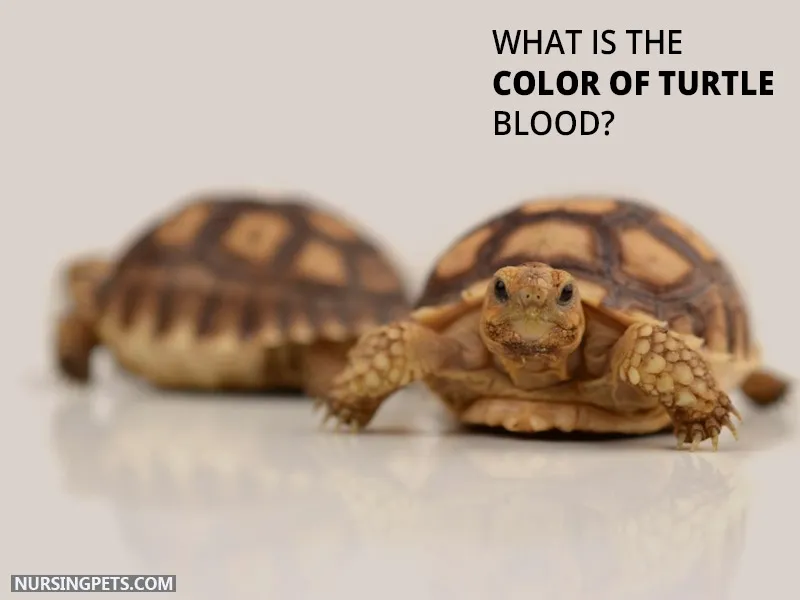
Again some, like the green sea turtles, contain (straw-colored) greenish-colored blood. Last but not least, some turtles have light-colored blood that appears pale green, yellow, or even white. That means you can’t name one specific color when someone asks about turtles’ blood color.
What Does The Shell Of A Turtle Do? What Is The Purpose Of The Shell?
Turtles’ shells have major duties to fulfill to keep these reptiles alive. Below, we have shared all their responsibilities. So, let’s sneak peek into them.

1. Offer Protection:
Protection is one of the main aspects of why turtles have bony shells. Their robust outer structure offers protection against predators, injuries, and bacterial or fungus infections. Not only that, but their shells also protect their vital organs and serve as weapons during the fight.
2. Help With Swimming:
Indeed, turtles’ shells facilitate their swimming experience as they help these reptiles stay afloat underwater and swim swiftly. FYI, sea turtles have flat shells compared to other species, allowing them to maintain buoyancy and swim comfortably.
3. Help With Burrowing:
Turtles’ shells enable them to dig soil and create spaces for nesting. Without the help of their shells, turtles can’t stay burrowed, whether underwater or on land.
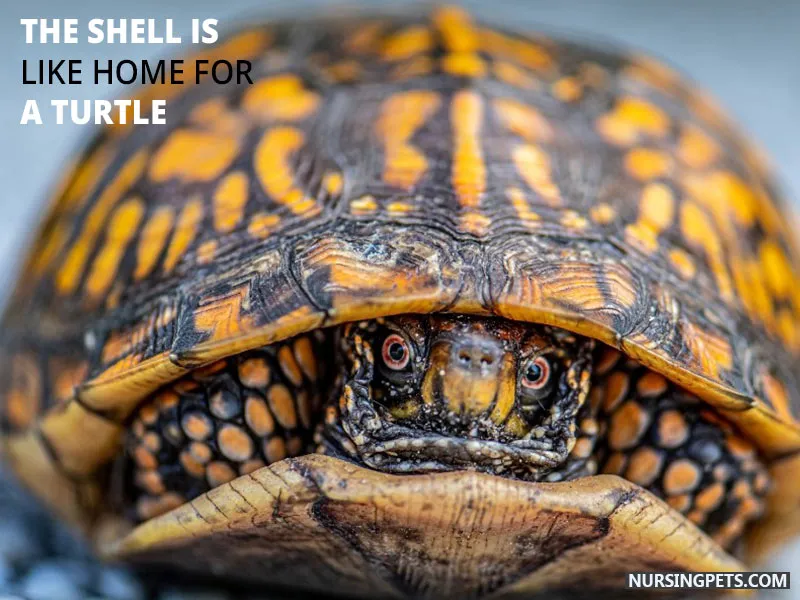
4. Serve As Home:
Overall, turtles’ shells are their home. Whenever these creatures feel threatened or are in danger, mostly, they retract their heads and limbs into the shells to feel safe and protected. So, we hope you understand why turtles’ shells are crucial for them.
Final Words:
Turtles have blood flow in their shells; without proper blood circulation, their shells may stop functioning and stop accomplishing essential tasks like shedding and growing in length. So, it’s evident that turtles require proper blood circulation within their bodies and shells to thrive.
However, that’s all for this article; we hope you got the information you were looking for. Stay in touch with us on Facebook, Twitter & Pinterest for updates on more content like this one.
Image Source: Canva.com/photos
Article Reference:
- Sapub.org/global/showpaperpdf.aspx?doi=10.5923/j.zoology.20130301.06
- Ontarioturtle.ca/turtles/some-interesting-turtle-facts/
- Turtleguardians.com/wp-content/uploads/2021/04/Organ-Systems-Grade-5.pdf
- Study.com/academy/lesson/reptile-circulatory-system.html
- Cuteness.com/article/turtle-bleeding-shell

